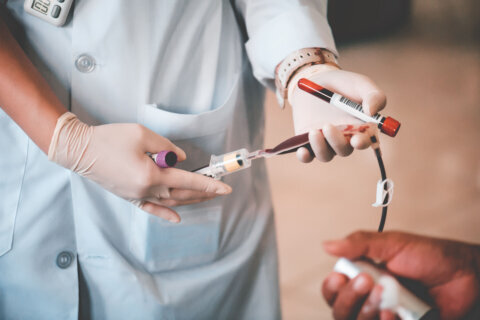Maya, a healthy 13 year-old girl, had finished soccer practice and noticed a sharp stabbing pain near her sternum. The pain was quite intense and would worsen with deep breathing. It got to the point that she had to lie down on the field. Maya’s mother was in the stands wondering what had happened to her daughter. Terrified, she ran down to the field expecting the worst.
Our society today is more knowledgeable about cardiac symptoms, and most patients seek prompt medical attention, knowing the stakes. Of course, in adults, chest pain is considered a precursor to a heart attack, and urgent action is warranted. In case you’re wondering: Chest pain during a heart attack is caused by ischemia, or a lack of blood flow to the heart. But fortunately, chest pain in children often has a much more optimistic outlook.
The Numbers in Pediatric Patients
Chest pain is one of the most common causes of unscheduled medical encounters. In patients 10 to 21 years old, chest pain accounts for more than 650,000 emergency department and primary care visits. It’s also the second most common reason for referral to a pediatric cardiologist. Despite its ever-present nature, chest pain has a non-cardiac cause (meaning it’s not related to the heart) in 98 percent of pediatric cases.
Important Signs and Symptoms
If your child visits the doctor for chest pain, he or she is likely to ask very specific questions about the discomfort. Often, the history alone can be a determining factor of the cause of chest pain, so detailed questions are the most important portion of the doctor’s visit. Insight into what the patient was doing, the intensity and location of the pain, worsened and alleviating factors and the duration of the pain will allow your doctor to narrow down the possible causes of the chest irritation. For example, a patient describing pain in the mid-sternum with a burning quality following a spicy meal is likely to have gastroesophageal reflux. Questions that address symptoms such as passing out and palpitations can also help diagnose possible cardiac causes of chest pain.
First Steps in Evaluating the Pain
The physical examination is another critical piece of the evaluation. As part of the evaluation, your pediatrician will palpate, examine and touch the chest wall with the intention of causing a similar quality of pain. The reproducibility of recurring chest pain is a reassuring sign, as it implies that the inflammation stems from the chest wall, not the heart itself. In fact, chest wall pain (or musculoskeletal pain) is the most common cause of chest pain in pediatric patients and is relatively easy to diagnose.
By listening to a child’s heart with a stethoscope, a physician can assess for the presence of structural heart problems as a possible cause of the pain. Cardiac murmurs can indicate the presence of structural heart disease. Luckily, the cardiac examination is oftentimes completely normal in otherwise healthy children. If for some reason the cardiac examination is not normal, a pediatrician will likely refer your child to see a specialist in pediatric cardiology.
More Aggressive Evaluation and Testing
Testing and laboratory evaluation are directed largely by the presence of positive or concerning findings above. If the assessment concludes no concerning findings, your doctor will not recommend further testing. If concerns arise, your doctor will refer you for further evaluation, which may include an electrocardiogram or an echocardiogram. Both of these non-invasive tests are aimed at assessing the cardiac rhythm and cardiac structure respectively.
Pinpointed the Underlying Cause
Treatment of chest pain is predicated, of course, on the underlying cause. Musculoskeletal chest pain is often treated with either observation or anti-inflammatory medications. Consistent treatment is the more likely to resolve any residual muscle inflammation and is often quite successful. Other therapies include general treatment strategies for asthma and gastroesphageal reflux, two other common causes of chest pain.
In Maya’s case, she was seen the same day by her pediatrician. Her chest pain had gone away, though during the examination her physician noticed tenderness along her sternum from the palpation exam. Maya was prescribed anti-inflammatory medication to resolve her chest pain.
More from U.S. News
8 Cool Uses for 3-D Printers in Health Care
10 Concerns Parents Have About Their Kids’ Health
11 Ways Healthy Community Design is Working
Chest Pain in Kids: Is it Normal or Something Worse? originally appeared on usnews.com







